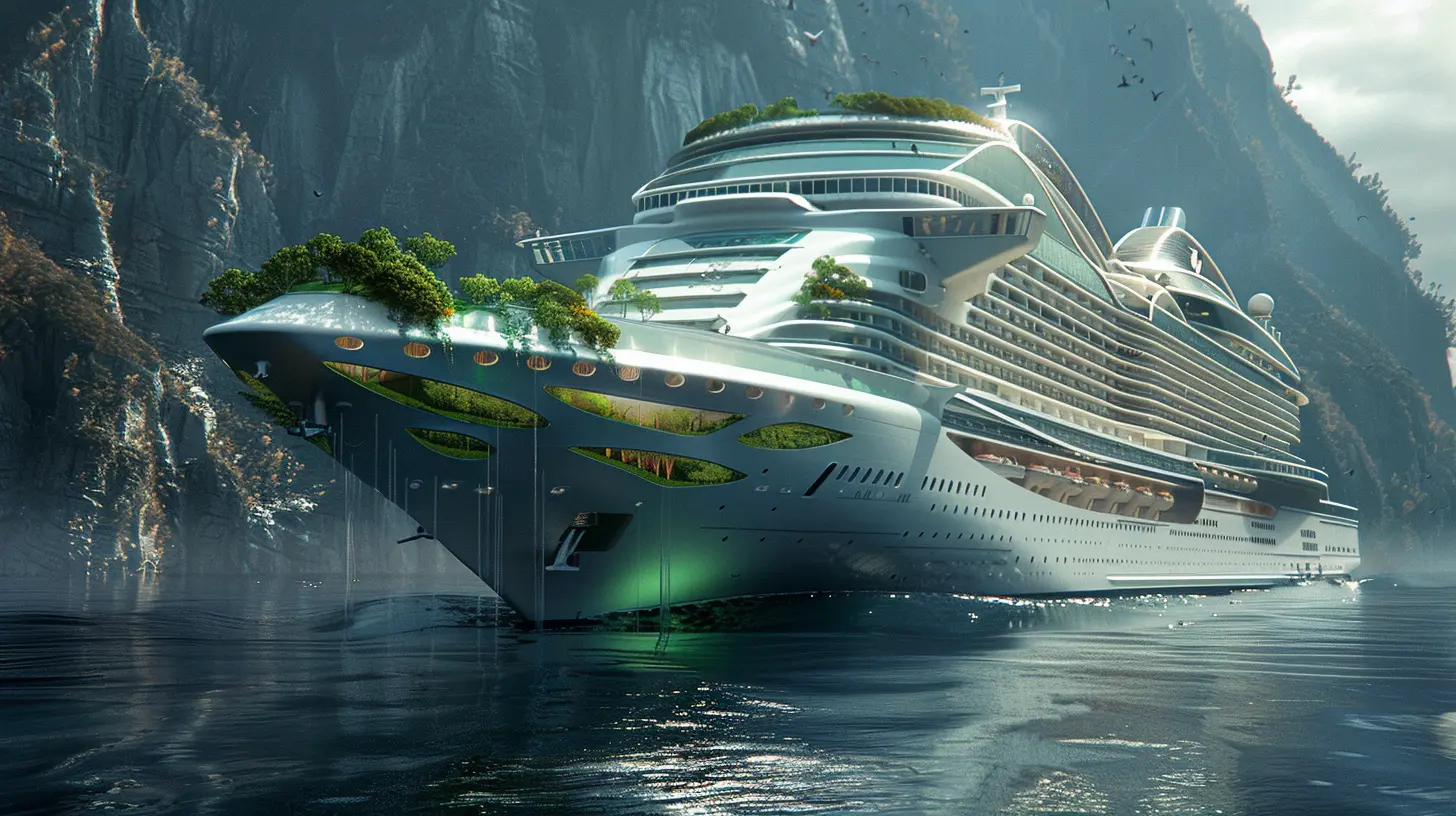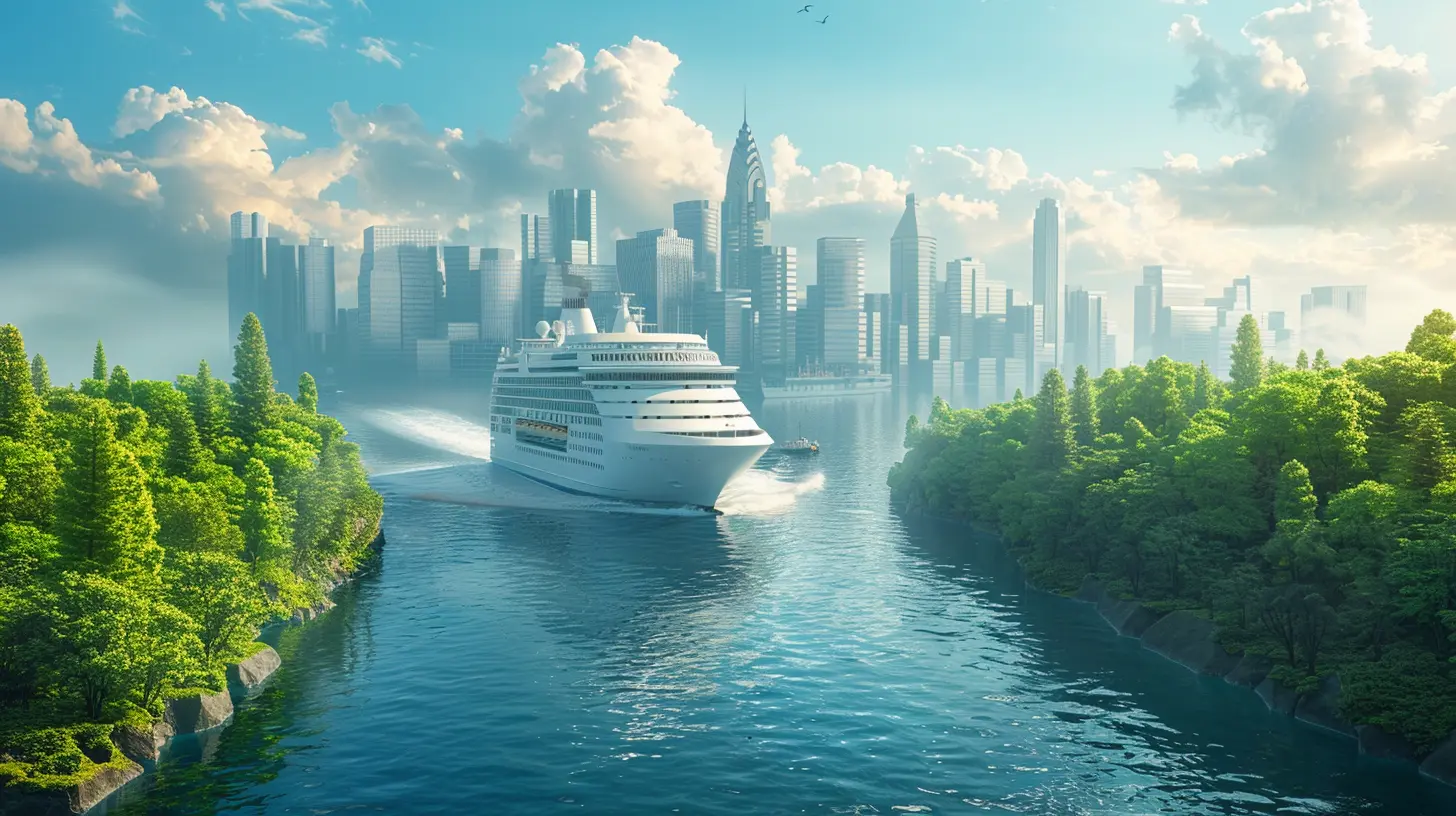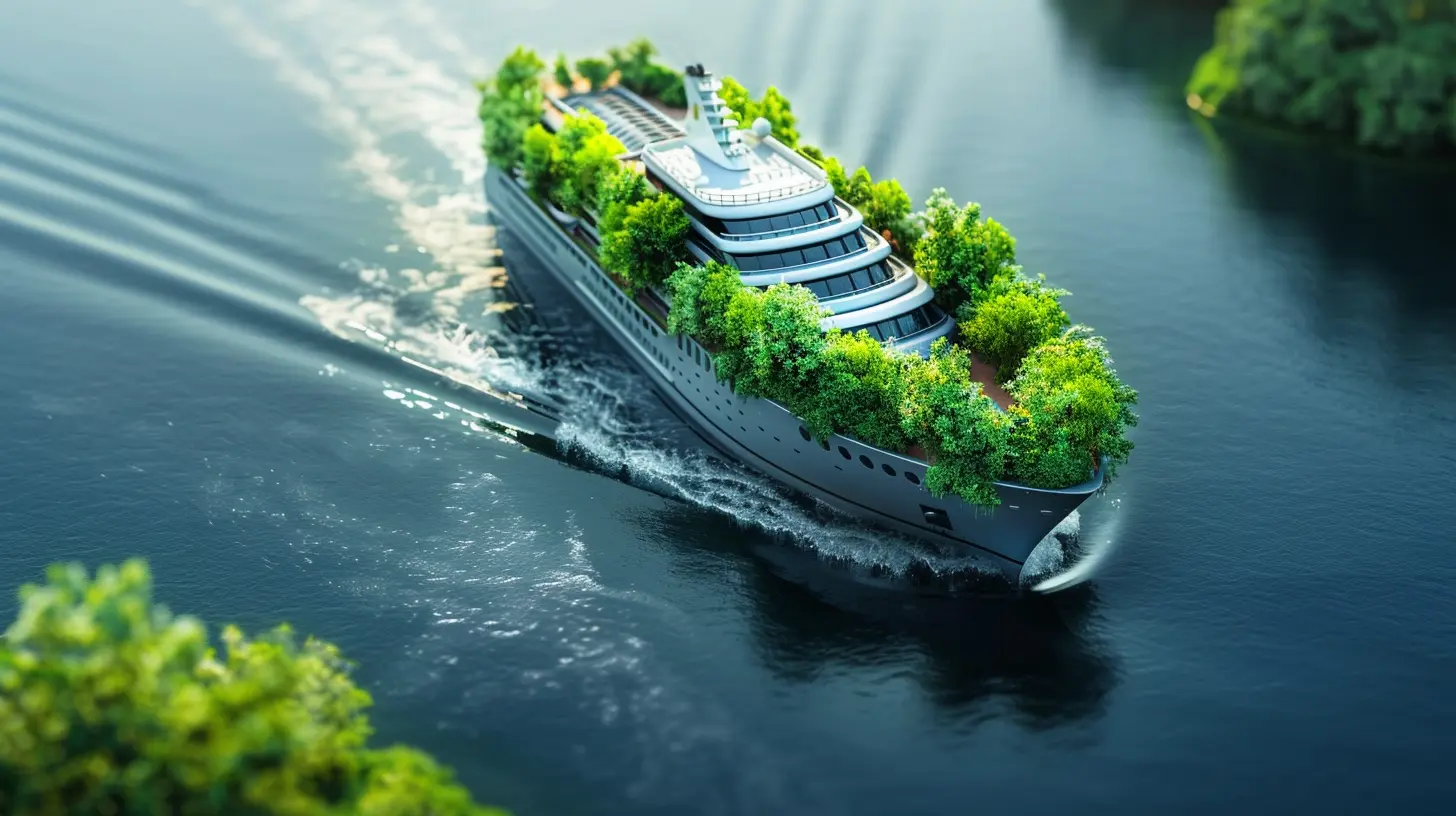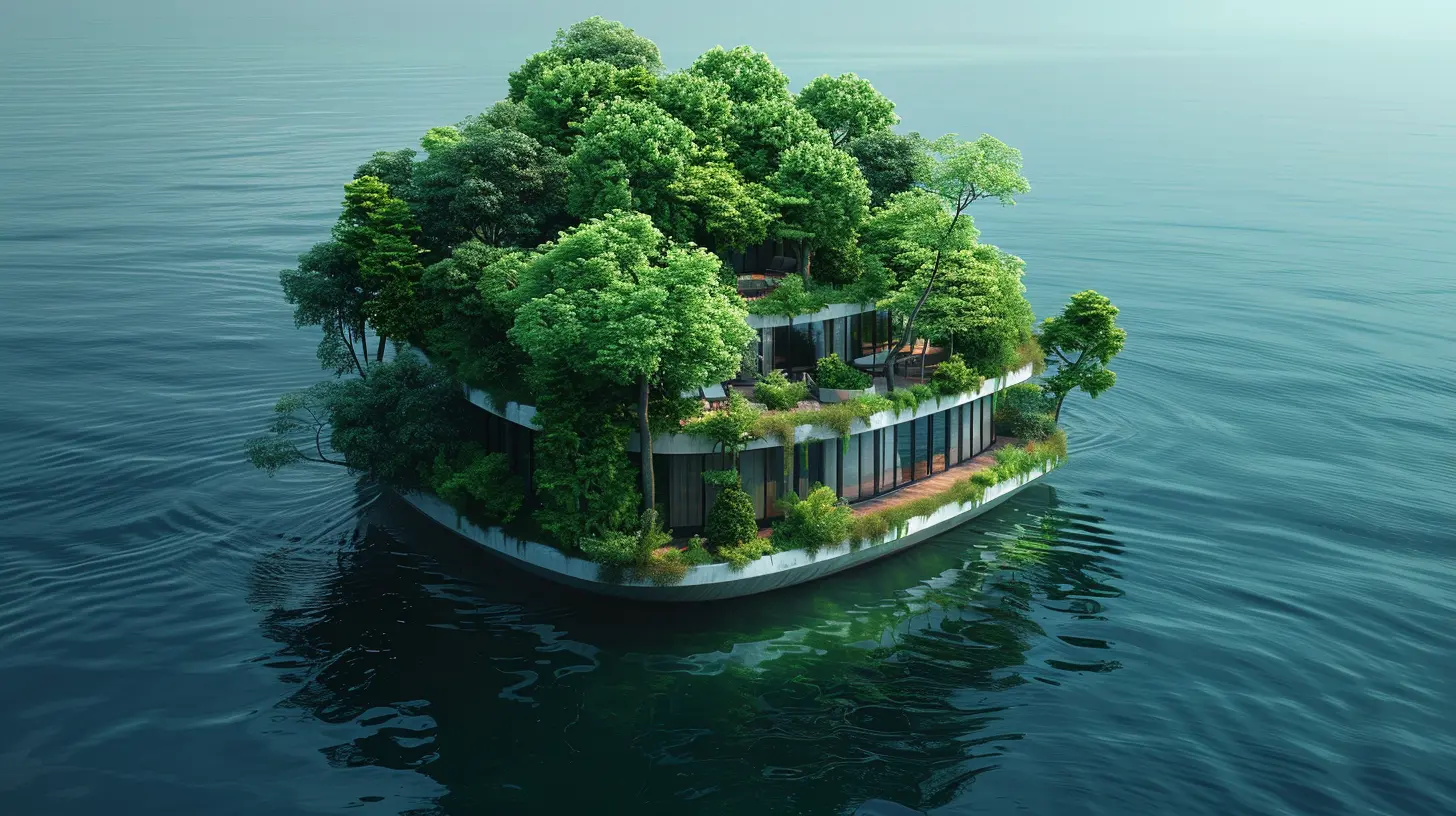Cruising Green: How Eco-Friendly are Modern Cruise Ships?
21 September 2025
Cruising is no longer just about luxury, breathtaking views, and endless entertainment. These days, there’s a big question floating around: How eco-friendly are modern cruise ships? With growing concerns about climate change and environmental conservation, many travelers are looking for greener ways to satisfy their wanderlust.
So, are cruise lines doing enough to protect the oceans they sail through? Let’s dive into the world of eco-friendly cruising and separate fact from fiction.

The Environmental Challenges of Cruising
Before we get into the solutions, let's talk about the problem. Traditional cruise ships have long been criticized for their environmental impact. Here’s why:- Massive Carbon Footprint – Cruise ships guzzle fuel like there’s no tomorrow. A single ship can emit as much carbon dioxide as thousands of cars combined.
- Waste Disposal – Imagine thousands of people living on a floating city for a week. That creates tons of waste, from food scraps to sewage. If not handled properly, this waste can end up in the ocean.
- Air Pollution – Older ships burn heavy fuel oil, releasing harmful sulfur and nitrogen oxides into the air. These pollutants contribute to acid rain and respiratory diseases.
- Damage to Marine Life – Large ships can unintentionally harm marine ecosystems by anchoring in sensitive coral reefs, releasing untreated wastewater, or disturbing wildlife.
Now that we know the challenges, let’s see how the industry is stepping up its game.

Green Initiatives in Modern Cruise Ships
Thankfully, the cruise industry isn’t ignoring these issues. Many cruise lines are making bold moves to reduce their environmental footprint. Here’s how:1. Liquefied Natural Gas (LNG) – A Cleaner Alternative
One of the biggest shifts in the industry is the switch to Liquefied Natural Gas (LNG). Unlike traditional heavy fuel oil, LNG burns cleaner and produces fewer emissions.- Cuts down sulfur oxide emissions almost completely.
- Reduces nitrogen oxide emissions by about 85%.
- Lowers carbon dioxide emissions by around 20%.
Companies like Carnival Corporation, MSC Cruises, and Royal Caribbean have already started rolling out LNG-powered ships. While it’s not a perfect solution, it’s definitely a step in the right direction.
2. Shore Power – Turning Off Engines in Port
Ships don’t just consume fuel while sailing—they also burn fuel when docked. This produces unnecessary air pollution in port cities.The solution? Shore power. When ships plug into local electrical grids instead of running their engines at port, they significantly reduce their emissions. Many ports, especially in North America and Europe, are installing shore power connections to support this initiative.
3. Advanced Wastewater Treatment Systems
Dumping untreated sewage into the ocean is no longer acceptable (as if it ever was!). Modern cruise ships now have advanced wastewater treatment systems, ensuring that only clean, treated water is released into the sea.These systems remove:
✔ Harmful bacteria
✔ Chemicals
✔ Microplastics
The result? Cleaner oceans and safer marine life.
4. Energy Efficiency and Smart Ship Design
Newer cruise ships are designed with energy efficiency in mind. Some key innovations include:- Air lubrication systems – These create a cushion of air bubbles under the hull, reducing friction and fuel consumption.
- LED lighting – Many ships now use energy-efficient LED lights instead of traditional bulbs.
- Smart HVAC systems – Heating, ventilation, and air conditioning systems are optimized to reduce energy waste.
5. Single-Use Plastics? No, Thanks!
The war against plastic has reached the high seas. Many cruise lines have banned single-use plastics, replacing them with biodegradable alternatives.- No more plastic straws, cups, or stirrers.
- Refillable water stations instead of plastic bottles.
- Sustainable packaging for onboard products.
These small changes add up to a big impact, especially when you consider how many passengers each cruise ship serves.

Eco-Friendly Cruises: The Leaders in Sustainability
Some cruise lines are going above and beyond when it comes to sustainability. If you’re looking to book an eco-friendly cruise, here are some of the greenest options available:1. Hurtigruten – Pioneering Hybrid Cruise Ships
Hurtigruten is leading the way with hybrid-powered expedition ships like the MS Roald Amundsen and MS Fridtjof Nansen. These vessels use battery packs to supplement their engines, reducing fuel consumption and emissions.2. MSC Cruises – Carbon-Neutral Operations
MSC Cruises is committed to becoming carbon neutral through a combination of cleaner fuel, energy efficiency, and carbon offset programs.3. Virgin Voyages – Plastic-Free and Energy-Efficient
Richard Branson’s cruise line, Virgin Voyages, is making waves with plastic-free policies and a focus on sustainable sourcing for food and materials.4. Ponant – Small Ships, Big Sustainability Efforts
Ponant operates small luxury cruise ships that comply with strict environmental standards, including LNG-powered vessels and hybrid propulsion systems.
The Future of Sustainable Cruising
So, what’s next? The future of cruising looks greener than ever with ambitious sustainability goals. Here’s what we can expect:- Fully Electric Cruise Ships – Just like electric cars, fully battery-powered cruise ships could become a reality within the next two decades.
- Hydrogen Fuel Innovations – Some cruise lines are exploring hydrogen fuel cells as an emission-free power source.
- More Strict Regulations – Governments and environmental organizations are pushing for stricter pollution regulations to hold cruise lines accountable.
What You Can Do as a Traveler
Sustainability isn’t just the responsibility of cruise lines—it’s also up to us as travelers! Here are some ways you can make your next cruise eco-friendly:✅ Choose a Green Cruise Line – Do your research and support companies that prioritize sustainability.
✅ Opt for Digital – Use e-tickets, e-maps, and digital boarding passes instead of printed ones.
✅ Be Mindful of Waste – Bring a reusable water bottle and say no to unnecessary plastic.
✅ Respect Marine Life – Avoid excursions that exploit wildlife and choose ethical tour operators.
✅ Offset Your Carbon Footprint – Some cruise lines offer carbon offset programs that support reforestation and renewable energy projects.
Is Cruising Green Yet?
The cruise industry still has a long way to go in becoming truly sustainable. While new technologies and policies are making cruising greener, there’s still work to be done. The good news? Travelers are demanding change, and cruise lines are listening.If you love the ocean, choosing an eco-friendly cruise is one of the best ways to enjoy guilt-free travel. The future of cruising is undoubtedly greener, and with continued innovation, we can hope for a world where luxury travel and sustainability go hand in hand.
all images in this post were generated using AI tools
Category:
Cruise TravelAuthor:

Shane Monroe
Discussion
rate this article
1 comments
Teagan Hunter
Great article! It's refreshing to see the cruise industry taking steps toward sustainability. It’s important for travelers to be mindful of their impact while enjoying the sea. Can’t wait to see how these eco-friendly innovations evolve in future voyages! 🌊✨
September 25, 2025 at 4:39 AM

Shane Monroe
Thank you! I'm glad you enjoyed the article. It's exciting to see the cruise industry embracing sustainability, and I share your enthusiasm for the future of eco-friendly travel. 🌍🚢


